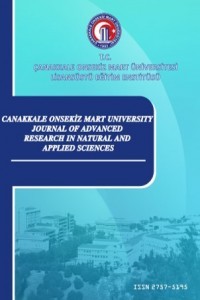Analyzing The Encountered Problems and Possible Solutions of Converting Relational Databases to Graph Databases
Relational database management systems have been used for storing data for a long time.
However, these systems are insufficient to analyze the large and complex structure of the data. Graph
databases are becoming more common day by day due to their capacity to contribute to the analysis.
Also, graph databases are better at modeling and querying complex relationships than relational
databases. To use graph databases with old data stored in relational databases a transfer process is
needed. In this study, the problems to be encountered in transferring the data stored in a relational
database to a graph database were examined and methods that could be used as solutions to them
were proposed. In addition, it is aimed to prevent data loss and data inconsistency that may occur with
design errors in relational databases. For this purpose, the normalization process needs to be applied
to a relational database before transferring data to a graph database. In our study, we developed a
method that converts data to the first normal form during the transfer. But for better data consistency in
practice third normal form is the minimum requirement. By using the functional dependencies found,
it is possible to make relational databases suitable for higher normal forms. For functional dependency
detection, which is normally a very time-consuming and costly process, we developed a method based
on a graph database.
___
- Ameya, N., Anil, P., & Dikshay, P. (2013). Type of NOSQL databases and its comparison with relational databases. International Journal of Applied Information Systems, 5(January 2013), 16–19.
- Angles, R. (2012). A comparison of current graph database models. Proceedings - 2012 IEEE 28th International Conference on Data Engineering Workshops, ICDEW 2012, April 2012, 171–177. https://doi.org/10.1109/ICDEW.2012.31
- Bahmani, A. H., Naghibzadeh, M., & Bahmani, B. (2008). Automatic database normalization and primary key generation. Canadian Conference on Electrical and Computer Engineering, June, 11–16. https://doi.org/10.1109/CCECE.2008.4564486
- Bala, M., & Martin, K. (1997). A mathematical programming approach to data base normalization. INFORMS Journal on Computing, 9(1), 1–14. https://doi.org/10.1287/ijoc.9.1.1
- Ball-Rokeach, R., & DeFleur, C. (1976). Dependency Model. Communication Research, 3, 6–17.
- Celko, J. (2014). Graph Databases. In Joe Celko’s Complete Guide to NoSQL. https://doi.org/10.1016/b978-0-12-407192-6.00003-0
- Demba, M. (2013). Algorithm for Relational Database Normalization Up to 3NF. International Journal of Database Management Systems, 5(3), 39–51. https://doi.org/10.5121/ijdms.2013.5303
- Dongare, Y. ., Dhabe, P. ., & Deshmukh, S. . (2011). RDBNorma: - A semi-automated tool for relational database schema normalization up to third normal form. International Journal of Database Management Systems, 3(1), 133–154. https://doi.org/10.5121/ijdms.2011.3109
- Elmasri, Ramez, and S. B. N. (2003). Dbms. In Encyclopedia of Genetics, Genomics, Proteomics and Informatics. https://doi.org/10.1007/978-1-4020-6754-9_4159
- G. Sunitha, & Jaya, A. (2013). A knowledge based approach for automatic database. International Journal of Advanced Research in Computer Engineering and Technology, 2(5), 1816–1819.
- Haerder, T., & Reuter, A. (1983). Principles of transaction-oriented database recovery. ACM Computing Surveys (CSUR), 15(4), 287–317. https://doi.org/10.1145/289.291
- Nan, Z., & Bai, X. (2019). The study on data migration from relational database to graph database. Journal of Physics: Conference Series, 1345(2). https://doi.org/10.1088/1742-6596/1345/2/022061
- Vyawahare, H. R., Karde, P. P., & Thakare, V. M. (2018). A Hybrid Database Approach Using Graph and Relational Database. Proceedings of the 2018 3rd IEEE International Conference on Research in Intelligent and Computing in Engineering, RICE 2018, September, 1–4. https://doi.org/10.1109/RICE.2018.8509057
- Yayın Aralığı: Yılda 4 Sayı
- Başlangıç: 2015
- Yayıncı: Çanakkale Onsekiz Mart Üniversitesi
